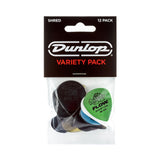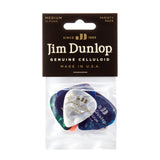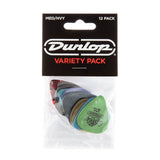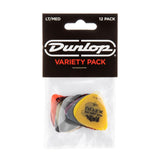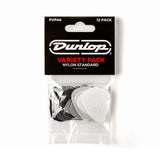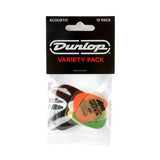Despite its diminutive appearance, your guitar nut is a crucial part of your guitar that can greatly affect tone and playability. The grooves of your nut guide your strings from the machine heads down the neck and work in tandem with your bridge saddles to vibrate your strings. If your nut is not creating the proper break angle for your strings it can cause tuning and intonation issues whereas if the slots are too wide or too deep then you can get string buzz, or even find strings not returning to correct pitch after you bend them.
Continuing our series around setting up your guitar, we’re deep diving into every aspect of a good guitar set up to empower you to make your own adjustments, whilst simultaneously improving your understanding of the individual components of your instrument. If you’re just joining us please make sure you’re starting from Part 1 to ensure you get the best possible set up for your guitar!
As always we recommend if you find yourself unsure of anything, you’re probably better off taking it to an expert. That said, there’s no reason you can’t make this adjustment yourself with some patience and a steady hand!
Guitar Setup Essentials
It’s important to have the right tools for your guitar setup. A lot of these are household tools you’ll find in any toolbox, but some require specific purchase. All of these tools will serve you throughout your guitar playing career, so they are a worthy investment for any guitar player!
- Guitar Tuner
- Allen Keys (Hex Wrenches)
- Ruler
- Nut Files
- Strings
- String Cutters
- Fretboard Oil
- Fret Polish
- Cleaning Cloths
- Screwdriver
- Body Polish
- Workbench Mat
- Neck Rest
Nut Materials
Nuts are typically made from Bone, Plastic, Graphite or less commonly nowadays, Brass. As the nut is one of the points upon which you guitar string resonates, its material can have a huge effect on your guitar tone.
Bone Nut
Bone is the most popular type of guitar nut we’ve encountered amongst guitar techs and luthiers. It’s a natural material and is very solid and dense, giving it excellent resonance and sustain. It’s also incredibly strong, meaning it will put up with plenty of abuse, great when you’re a regularly gigging guitarist.
There are some disadvantages to bone nuts however. As bone is a natural material you may find certain soft spots in its construction, which is to be expected for something that isn’t man made. This means that different bone nuts may give slightly different results when it comes to mass production.
Plastic Nut
Plastic Nuts are pretty popular on beginner and intermediate level guitars, used as a cost saving measure during production. It is a low cost product, but is also incredibly easy to work with if you want to make adjustments and for the most part you’ll always get a reliable result with plastic nuts, without much difference from batch to batch.
That said it is less dense and solid than bone, so the tonal properties it delivers aren’t always as desirable as you would hope for. For the most part you can file plastic nuts under ‘average’ they do the job unspectacularly, but solidly. Nowadays you also have the TUSQ nut which improves upon traditional plastic designs and is highly regarded in guitar communities.
Graphite Nut
Graphite Nuts are a more modern invention but offer plenty of advantages over traditional plastic nuts. It is a self lubricating material so offers excellent tuning stability, particularly if you’re a serial abuser of your tremolo arm. It’s incredibly consistent in its construction, making it super easy to work with and has a nice, smooth sound.
There aren’t many downsides to Graphite Nuts if we’re being honest, but to be nit-picky they’re only available in black, which may not be what you’re going for when emulating vintage guitar builds.
Brass (or Steel) Nuts
Metal nuts are far less common these days than they used to be, likely because they deliver more high end frequencies than any of the other types listed in this article. A Brass or Steel will be incredibly durable, so once fitted it will require minimal maintenance. It adds a bright sound with a slight twang that’s great for country music, working really well with steel string acoustic guitars.
However, high end frequencies might not be your bag, and a lot of guitarists find them quite harsh on the ear. They’re difficult to work with due to the material strength and a lot of guitarists find they colour the look of the guitar due to their shiny finish.
Checking the Nut
Generally speaking, the nut slots should be just a tiny bit higher than the top of the frets and angled down toward the machine heads to create a break angle for the strings. You can check this by fretting the guitar at the third fret and looking at the first fret to see the distance between the string and the fret.
When you press down on the string there should be barely any movement, and a tiny space (we’re talking less than 0.5mm) between the string and first fret. If you’re struggling to see this you can try closing one eye, or alternatively lightly tapping the string and listening for the sound of the string contacting the fret.
If there is no movement at all then your nut is likely too low and will require replacing. You may also find string buzz when fretting near the headstock of the guitar due to this. There are ways to 'fill' a guitar nut but this is very time consuming and would only really be recommended if you have a vintage instrument and want to keep everything original.
If there is a lot of movement or a big gap between the string and the first fret then your will need to sand the nut down. There are several ways of going about this depending on which guitar you have.
Filing Nut Slots
If the gap isn’t huge but you want it lower, then you will need a set of nut files. This is gentle, patient work and requires you to take your time or else you’ll go too far and end up having to replace the nut entirely. The grooves need to be the same width as the gauge of string you’re putting on the guitar, so using the right size file is essential to creating the right size gap. The groove should always be filed angled down towards the headstock of the guitar. Ideally the string should sit half in and half out of the groove, but this may vary dependent on the way the rest of the guitar is set up.
Filing the Whole Nut
If the gap between the first fret and string is huge, then you may be better off filing the entire nut by taking it out of the slot and sanding the bottom of the nut to lower everything at once. Again this work should be undertaken with care, patience, and a soft touch to prevent you going too far, and regular checking of the height is essential to ensure the adjustment is being made correctly.
Removing a Guitar Nut
The way you remove the nut varies dependent upon the guitar make and manufacturer. If you’re lucky, the nut will just be simply sitting in the slot, held in place by the tension of the strings. You just remove the strings, take the nut out, file to your contentment, then rinse and repeat until you get the result you want.
However you may find that the nut has been glued in, in which case the process is far more elongated. You will need to remove the strings, then using a scalpel or other precision cutting tool, score through the glue/lacquer along the edges of the guitar nut, being careful not to cut into your fretboard wood.
Once this step is complete, you need to carefully ‘tap’ the nut out of its slot. You do this by placing a block of wood against the long edges of nut and tapping it lightly with a mallet. To wiggle it out you’ll need to alternate between both sides of the nut, using minimal force and taking your time with it. The idea with this process is that you’ll break the glue bond gently without damaging your guitar neck or the slot the nut sits in. You may find you’re able to prise it out with a flathead screw driver once you’ve knocked it around a bit, but if not just keep at it with the mallet. You may also be able to push it out sideways by using a smaller piece of wood and tapping that with a mallet. Unless a ridiculous amount of adhesive has been used in the construction of the guitar, you should find the nut comes out with minimal force applied.
Replacing a Guitar Nut
Once the old nut is out, it’s time to clean up that nut slot. Remove all the old glue residue as well as any dust or splinters and ensure your new nut has a smooth and stable platform to sit on. Add a couple of dabs of super glue, push your new nut into place then let it sit for a while and settle before you restring your guitar. Some guitar nuts may need sanding down before they’re at the right height for your guitar, so in this instance don’t glue it and test it out first before you commit.
In Conclusion
Adjusting or changing your nut need not be a headache and it’s a relatively simple adjustment to make, but the key is to always take it slow, steady, and with patience. You may be surprised at how much difference even a slight change can make in the playability of your guitar, it really is such an important part of the instrument’s construction.
Head to our website if you need a new Guitar Nut.
Once you're done setting your Guitar Nut, you can continue with your setup in Part 4 of our Guitar Setup Guide.
More in This Series
Part 1 - Truss Rod Adjustment
Part 2 - Adjusting the Action
Part 3 - Know Your (Guitar) Nuts
Part 4 - Keeping Things Clean
Part 5 - Intonation Adjustment
Part 6 - Pickup Height




















